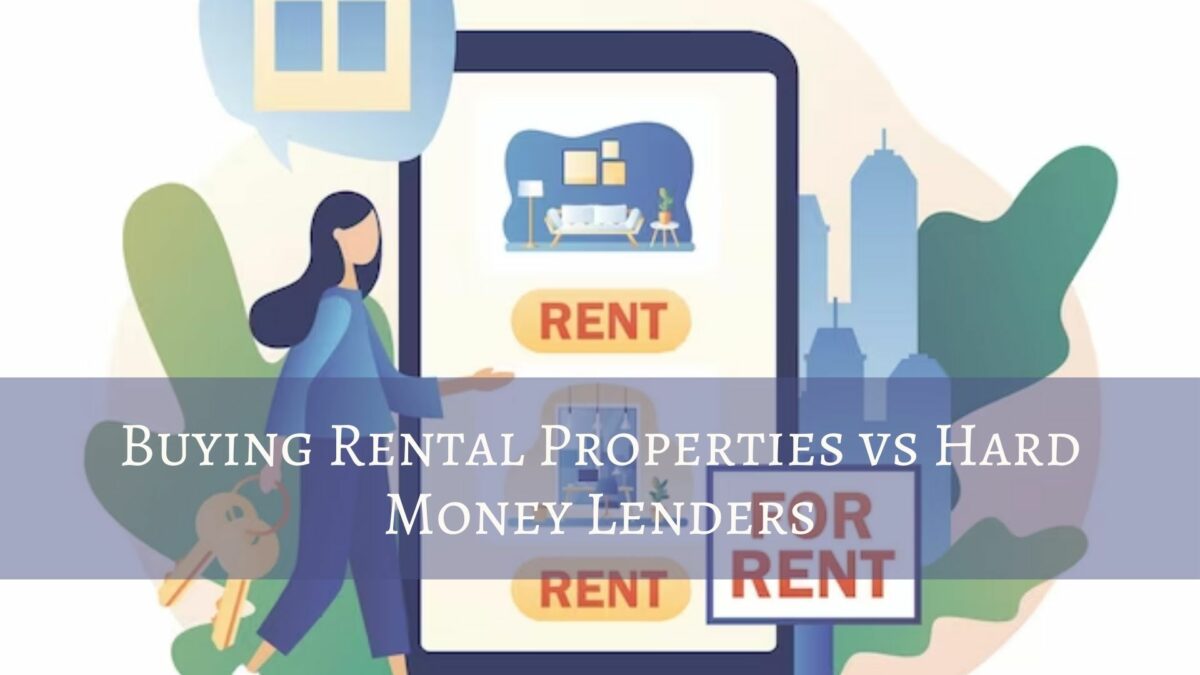“The man who won’t loan money isn’t going to have many friends – or need them.”
–Wilt Chamberlain
“There are 350 varieties of sharks, not counting loan and pool.”
–L.M. Boyd
“Sure, Homer, I can loan you the money. However, since you have no collateral, I’m gonna have to break your legs in advance.”
–Moe from The Simpsons
I recently had a reader ask me about investing in hard money lenders versus buying rental properties. She was interested in pooling her money with a few other investors and acting as the bank to other home buyers and wanted to know what I thought about the idea.
As many of you know, I am a fan of investing in rental real estate. We invest in it ourselves, and it’s part of our retirement plan.
Once upon a time, I considered being the bank and lending money to others so that they could buy properties. There are some upsides to lending money, often called hard money lending (HML) or private money lending (PML):

- It’s backed by real collateral. You’re not just loaning money to a friend or family with hopes of someday getting it back. Instead, you’re lending it in association with a mortgage that is tied to an actual piece of real estate. If the person who borrows the money defaults on the loan, then you can foreclose and get the property.
- Better interest rates than CDs or most bonds. Borrowers use hard money lenders because they can’t get standard financing from banks or credit unions. The reason that they can’t is because either they don’t have the credit rating to do so or what they’re borrowing for falls outside of the risk parameters that the bank will lend for. In either case, since there’s a higher risk of the borrower not paying the money back, the lender gets to charge a higher interest rate to balance things out. More risk = higher interest rate.
- Fees and quick turnover. Most hard money loans come with an upfront fee – around 2% of the total loan – and are for the purposes of rehabbing a property or for a real estate flip. Ideally, the borrower borrows the money for six months, sells or refinances through a traditional lender, and the hard money lenders gets the money back. Lather, rinse, repeat.
I even went so far as to talk to a mortgage broker about how we could get involved in private money lending. I figured I could use my good credit – an irony since I was in grad school and had only a trickle of income coming in from teaching Kaplan classes – to borrow money, which I’d then lend to real estate investors, and profit from the difference in interest rates and fees.
Then my wife finally decided to put her foot down.
Are you sure about this? What if the loan goes bad? How will you repay what you borrowed?
Oops. Darn reality coming in and messing up my dreams.
Eventually, we were in a position where we could start purchasing rental properties with cash. We had eliminated one of the problems with trying to be hard money lenders without the actual cash to lend.
Yet, we decided to purchase rental properties instead of lending money.
Why did we Decide on Investing in Real Estate rather than Being Hard Money Lenders?

For us, the decision was a mix of morals and pragmatism.
- It would be hypocritical to lend money while telling people not to borrow money. I discuss this position much more in the article “Should You Invest in LendingClub or Prosper?”
- We can’t model credit risk better than the banks can. When I worked at Capital One, there were scores of statisticians with PhDs developing exceptionally complicated models to determine whether or not borrowers would pay back money they borrowed on their credit cards. Capital One’s big money maker was the subprime market – those people with lower credit scores – and even they couldn’t predict who would pay on their credit cards 100% of the time. I might be a competent modeler, but I have neither sufficient data nor the Ph.D. in statistics required to come close to making accurate enough guesses to avoid taking high risks with our money.
- Time and money required to foreclose. If someone borrowed money from us in a hard money loan and didn’t pay back, we’d have to foreclose. Foreclosure can take months and requires, at least the first time, an attorney to help you do it correctly. If the borrower declares bankruptcy along the way, then you’re lost in bankruptcy limbo for up to a couple of years. You get to line up with the other creditors and wait for the bankruptcy court to determine who gets what.
- You have to do just as much research, if not more, as you would in investing in real estate yourself. Not only do you have to research the borrower to estimate the chances of getting your money back, but you also have to research the property that will be the collateral for the loan. Is it worth what is being borrowed? Will it cost what the borrower says it will cost to repair? What will the after repair value be? Will you have enough equity in the repaired property to make it profitable even if you have to foreclose?
- You have to inspect progress. Most hard money loans are for the purpose of buying a property, fixing it, and then selling it. As a lender, you have to go check on the progress before you allow another draw. That means understanding construction, remodeling, and project management enough to determine whether a certain percentage of the work actually has been completed before stroking another check.
- You have to find more borrowers. Even if everything works out just like it’s supposed to, once the borrower has repaid the loan, you have to find another borrower. You could use a mortgage broker (just like rental property owners use a property manager), but it will eat into your profits. You’ll need to account for the mortgage broker’s fees in your profit calculations.
- It’s not passive. Unless you can find a mortgage broker who is also willing to do all of the legwork in evaluating the loan and in inspecting the construction process, you’re going to need to participate. That is not my definition of passive income. Passive income means I make the investment and then collect the checks. Dividends are passive income. Interest is passive income. Rental properties managed by a motivated and skillful property manager provide passive income. Needing to find new borrowers every few months, communicating with the borrower to ensure payments come in, evaluating underlying properties, and inspecting construction progress do not qualify as passive income to me.
Therefore, hard money lending does not fit into my definition of PIRE. I’m sure there are plenty of skilled hard money lenders who are making a higher return on their investment through their hard money loans than we are through our investment in rental properties. That’s fine with me. I don’t have the appetite for the swings that come with riskier investments; nor do I think that I could price the appropriate interest rate for lending the money to compensate for the risk.
What about you? Do you invest in real estate? Are you a hard money lender? If you don’t do either, which would you choose? Or would you choose neither? Let’s talk about it in the comments below!
Author Profile
- John Davis is a nationally recognized expert on credit reporting, credit scoring, and identity theft. He has written four books about his expertise in the field and has been featured extensively in numerous media outlets such as The Wall Street Journal, The Washington Post, CNN, CBS News, CNBC, Fox Business, and many more. With over 20 years of experience helping consumers understand their credit and identity protection rights, John is passionate about empowering people to take control of their finances. He works with financial institutions to develop consumer-friendly policies that promote financial literacy and responsible borrowing habits.
Latest entries
 Low Income GrantsSeptember 25, 2023How to Get a Free Government Phone: A Step-by-Step Guide
Low Income GrantsSeptember 25, 2023How to Get a Free Government Phone: A Step-by-Step Guide Low Income GrantsSeptember 25, 2023Dental Charities That Help With Dental Costs
Low Income GrantsSeptember 25, 2023Dental Charities That Help With Dental Costs Low Income GrantsSeptember 25, 2023Low-Cost Hearing Aids for Seniors: A Comprehensive Guide
Low Income GrantsSeptember 25, 2023Low-Cost Hearing Aids for Seniors: A Comprehensive Guide Low Income GrantsSeptember 25, 2023Second Chance Apartments that Accept Evictions: A Comprehensive Guide
Low Income GrantsSeptember 25, 2023Second Chance Apartments that Accept Evictions: A Comprehensive Guide

